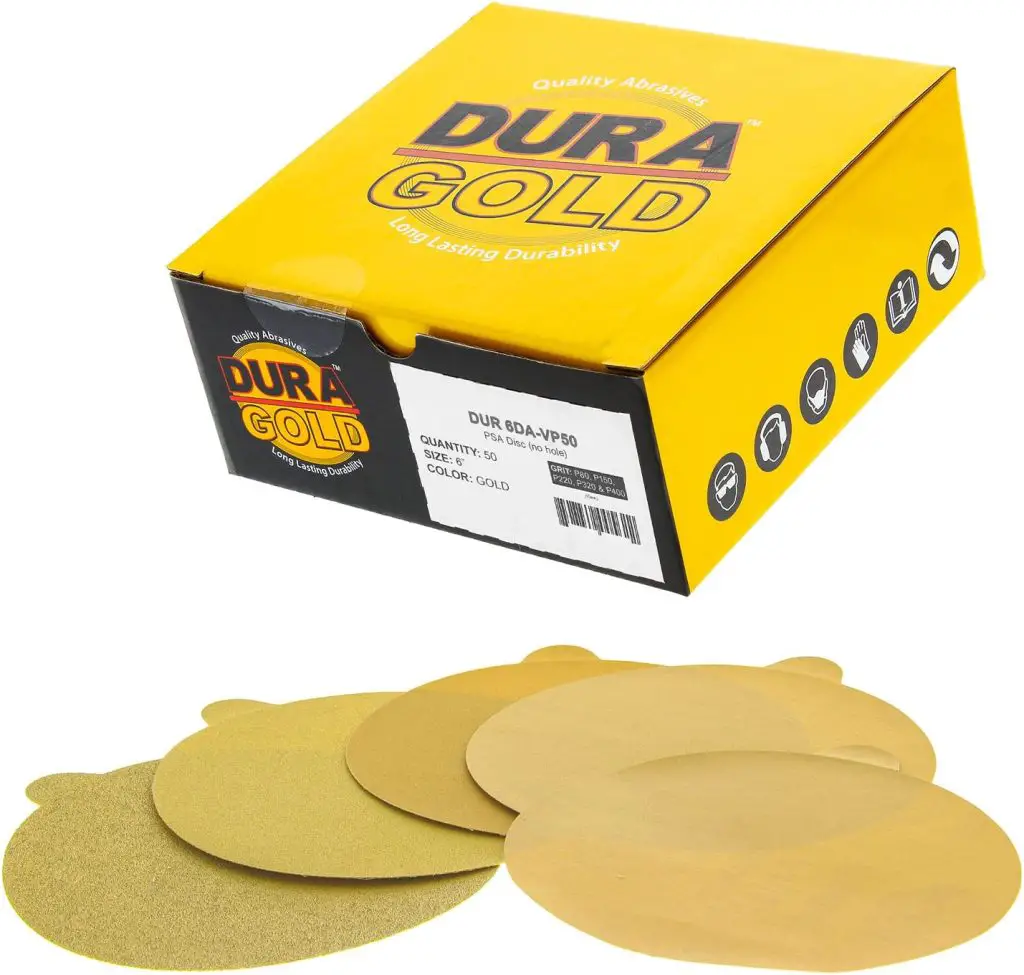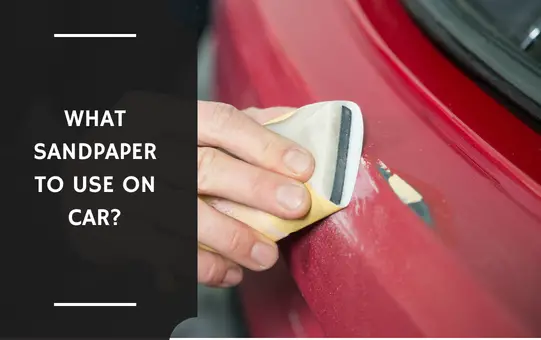When it comes to auto body work, sanding is an essential step in achieving a smooth and even surface.
But with so many different types of sandpaper available, it can be overwhelming to determine which one to use on your car.
What Sandpaper to Use on Car?
There is no one-size-fits-all answer to this question, as the best sandpaper for use on a car will vary depending on the type of finish that is being applied and the severity of the scratch that is being repaired.
In this article, we’ll explore the different types of sandpaper and which ones are best for automotive use.
See Also: Which Sandpaper for Drywall?
What Sandpaper to Use on Car? – Guide
Sandpaper is an abrasive material that is used to smooth out rough surfaces. It is made up of a paper or fabric backing that is coated with abrasive particles such as aluminum oxide or silicon carbide. The abrasive particles are held together with a resin or glue binder.
Sandpaper is available in various grit sizes, which determine how coarse or fine the abrasive particles are.
The lower the grit number, the coarser the sandpaper, and the higher the number, the finer the sandpaper.
Types of Sandpaper
There are several types of sandpaper available for automotive use, including:
Dry Sandpaper
This is the most common type of sandpaper and is used for sanding dry surfaces. It is available in a variety of grits and is ideal for removing rust, paint, and other surface imperfections.
Wet Sandpaper
Wet sandpaper is used for wet sanding, which involves sanding a surface while it is submerged in water.
This type of sandpaper is used for automotive painting and refinishing, as it helps to achieve a smoother and more even surface.
Emery Cloth
Emery cloth is a type of sandpaper that is made from a fabric backing that is coated with abrasive particles. It is ideal for sanding metal surfaces, as it is durable and can withstand high heat.
Sanding Sponges
Sanding sponges are a type of sandpaper that is mounted on a foam sponge. They are ideal for sanding contoured surfaces and are available in a variety of grits.
Which Grit to Use?
The grit of sandpaper that you use will depend on the type of surface that you are sanding and the type of finish that you are trying to achieve.
For rough surfaces, you will need lower-grit sandpaper, while for smooth surfaces, you will need higher-grit sandpaper.
For example, if you are sanding a surface that has a lot of rust or paint, you will need to use a lower grit sandpaper, such as 80 grit.
If you are sanding a surface that is already smooth, you will need to use a higher-grit sandpaper, such as 400 grit.

Dura-Gold Premium Sandpaper Discs
Achieve a flawless finish with Dura-Gold’s Premium Gold PSA Sanding Discs.
This set of 50 self-adhesive discs, with grits ranging from 80 to 400, are perfect for sanding automotive paint, woodworking, and metal.
Get yours now for professional-grade results.
Tips for Sanding a Car
Sanding a car requires patience and attention to detail. Here are some tips to help you achieve the best results:
Clean the Surface
Before you start sanding, make sure that the surface is clean and free from debris. Use a degreaser to remove any oil or grease from the surface.
Use the Right Grit
Use the right grit sandpaper for the surface that you are sanding. Start with lower-grit sandpaper and work your way up to higher-grit sandpaper.
Sand in a Circular Motion
When sanding, use a circular motion to achieve an even surface. Start with coarse grit sandpaper and gradually move to finer grit sandpaper.
Use a Sanding Block
Use a sanding block to achieve a flat and even surface. This will prevent the sandpaper from creating uneven surfaces or grooves.
Use Water
If you are wet sanding, make sure to use enough water to keep the surface lubricated. This will prevent the sandpaper from clogging and will help to achieve a smoother surface.
Check Your Progress
Check your progress often to ensure that you are achieving the desired results. Wipe the surface clean with a cloth to see the areas that still need to be sanded.
Be Gentle
When sanding, be gentle and do not apply too much pressure. Applying too much pressure can cause uneven surfaces and can even damage the surface that you are sanding.
Final Thoughts
In short, sanding is an essential step in achieving a smooth and even surface in auto bodywork.
With the right sandpaper and technique, you can achieve a professional-looking finish that will make your car look its best.
Remember to take your time, be gentle, and check your progress often to achieve the desired results.
Read Also: Can You Sandpaper Plastic?
